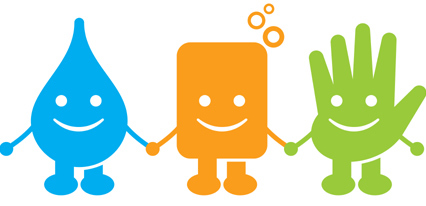Tag Archives for " hand hygiene "

5 ways to reduce hospital-acquired infections
Hospital-acquired infections are a serious issue. Resulting in loss of lives and increased hospital costs, both of which are preventable. These 5 tips may help.
Although the rates of infection have steadily decreased over the past few years, still approximately 75,000 deaths were attributed to hospital-acquired infections in 2011, according to the Centers for Disease Control and Prevention.
There are measures that can be taken to lower infection rates which are surprisingly easy.
Red blood cell (RBC) transfusion strategies are a common treatment in the U.S. But, infection rates dropped by 20 percent when hospitals performed them less often.
It is the simplest one on the list, and a shock that it even needs to be on here. Yet, a large enough portion of healthcare workers resist the practice that it bears constant reminding.
This is a shameless plug because it works. Other industries have adopted information technologies to dramatically improve their quality, Healthcare is no different.
A study at Case Western Reserve University School of Medicine found that a dedicated and educated housekeeping team reduced room infection by 89% of baseline.
- Consider using copper surfaces
A study published in the May 2013 issue of Infection Control and Epidemiology found that copper surfaces reduced the amount of health care-acquired infections by more than half.
Did you know that October 15, is Global Handwashing Day?
I didn’t until I wrote this article. Find out more information by visiting the globalhandwashing.org website.
Who ‘Hawthorned’ the Data?
 Remember learning about the Hawthorne Effect? It’s a phenomenon first described by Elton Mayo and Fritz Roethlisberger, published in the late 1930s, in which “subjects in behavioral studies change their performance in response to being observed.” (http://hbs.me/1sGFCRy) As the theory developed, this was seen as employee motivation and productivity being enhanced by feeling special as a result of direct supervision, social participation in the workplace, and a host of other ground-breaking ideas at the time. Although the Hawthorne Experiments have been criticized over the years for lacking scientific rigor, the ideas generated from this work became the foundation of employee-as-human thinking, and it’s hard to argue with that. You pay attention to people and they do better work. So far so good, right?
Remember learning about the Hawthorne Effect? It’s a phenomenon first described by Elton Mayo and Fritz Roethlisberger, published in the late 1930s, in which “subjects in behavioral studies change their performance in response to being observed.” (http://hbs.me/1sGFCRy) As the theory developed, this was seen as employee motivation and productivity being enhanced by feeling special as a result of direct supervision, social participation in the workplace, and a host of other ground-breaking ideas at the time. Although the Hawthorne Experiments have been criticized over the years for lacking scientific rigor, the ideas generated from this work became the foundation of employee-as-human thinking, and it’s hard to argue with that. You pay attention to people and they do better work. So far so good, right?
This month, a Canadian study was published that looked at the relationship of hand hygiene compliance to hospital staff awareness of being observed washing their hands. (https://www.hbs.edu/faculty/Pages/item.aspx?num=52445) Predictably, staff compliance increased 300% when they were aware of an auditor lurking nearby. This was labeled by the researchers as a result of the Hawthorne Effect. The troubling conclusion was that due to data being collected while staff are observed, the actual hand hygiene compliance rate is being inflated in publicly reported data. The implications of inflated rates or, specifically, worse hand hygiene compliance than what is being reported, disturbs on several levels including decision-making and policy-setting based on inaccurate data.
The important part of this for hospitals is how to get accurate data. If the Hawthorne Effect is the golden ticket responsible for improved performance but also the culprit behind inaccurate data, then we have some sorting out to do. Yes, we want to see 300% improvement across all our quality measures – but does that mean always standing over people watching them hang IVs, administer medications, and use appropriate sterile technique? Not likely. Back in Elton Mayo’s day when the work force was still finding a respectful work place, it appeared that attention to the employee, so sorely missing back then, could take the form of manager proximity to the employee performing his or her duties. This was construed as being engaged, and the employee felt singled out in a very positive way. These days, we expect our staff to be conscientious whether or not the QI Director is auditing performance. And, equally as important, we want staff to know they are respected and their contribution to the organization is valued.
I was on the phone with an ActionCue client today, an infection control nurse at a small hospital, and we were talking about how she collects hand hygiene compliance data. She said that she is going to have other manager/supervisory staff make ten observations a month of hand hygiene compliance in the course of their regular day on the floor. If she has even three helpers, that is 30 additional observations a month. More observations lead to more reliable data, and different people will be responsible which will decrease the auditor presence that seems to “Hawthorne” the data.
So try this: 1.) Get more people involved in quality improvement by sharing data rates with all staff, 2.) allow more people to be responsible for data collection to improve data volume and reliability, and 3.) rotate data collection to increase accountability –we’re all in this together! You will simultaneously let staff know you value the integral part they play and, I believe, get real first-person data collection that you can trust.
